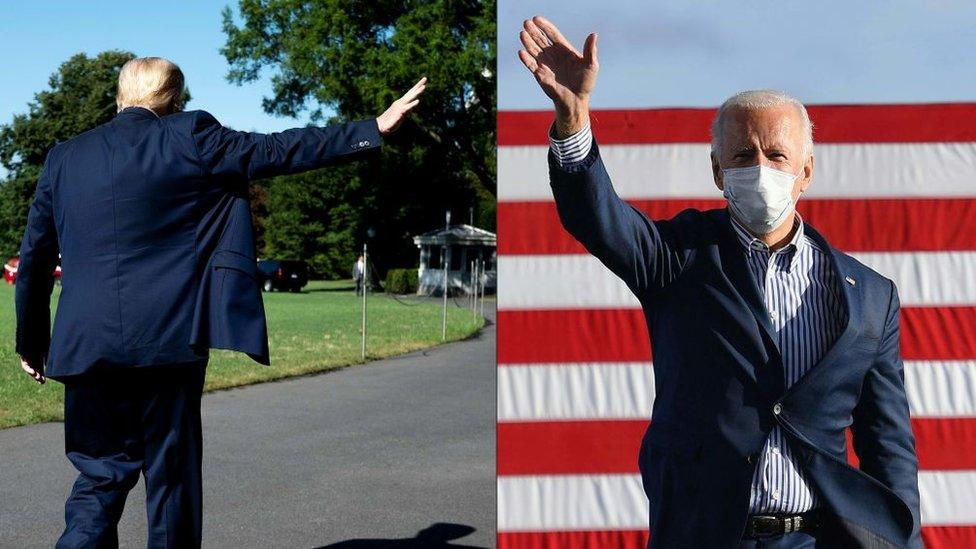Biden inauguration: How security threats and Covid have changed ceremony
- Published

National Guard soldiers being issued with rifles outside the US Capitol
President-elect Joe Biden will be sworn into office at midday on Wednesday at a ceremony in the US capital Washington DC.
In some ways, the inauguration will be much the same as previous ones - Mr Biden will take the oath of office on the steps of the Capitol and then make his way to the White House.
But with the event happening just two weeks after supporters of President Donald Trump stormed the Capitol - and coming amid a global pandemic - there will be lots of differences.
Here's an in-depth look at what measures have been put into place to deal with heightened concerns about security and Covid-19.

US troops descend on DC
Questions are still being asked about how a mob was able to overrun the Capitol on 6 January, leaving five people dead, and the FBI has warned of further armed protests - so it's no surprise that security measures have been greatly increased in recent days.
Inaugurations are designated a "National Special Security Event", meaning the US Secret Service has overall command, but this time they will be supported by an increased mix of forces, including the DC Metropolitan Police Department and the National Guard.
National Guardsmen began arriving at the Capitol last week and eventually around 25,000 are expected to be involved in security efforts. There were 8,000 at Mr Trump's inauguration in 2017.
The Pentagon has given its approval for some of those troops to be armed, with many stationed around the Capital being pictured with handguns or rifles.

Travel restrictions stepped up
One of the main roles for those personnel will be manning dozens of road blocks across the centre of the city, including on several key bridges that cross the Potomac River.
Access will be closely guarded, with only residents or businesses allowed to move around the outer "green zone" while the "red zone" will be limited to just authorised vehicles.
More than a dozen subway stations have also been closed.
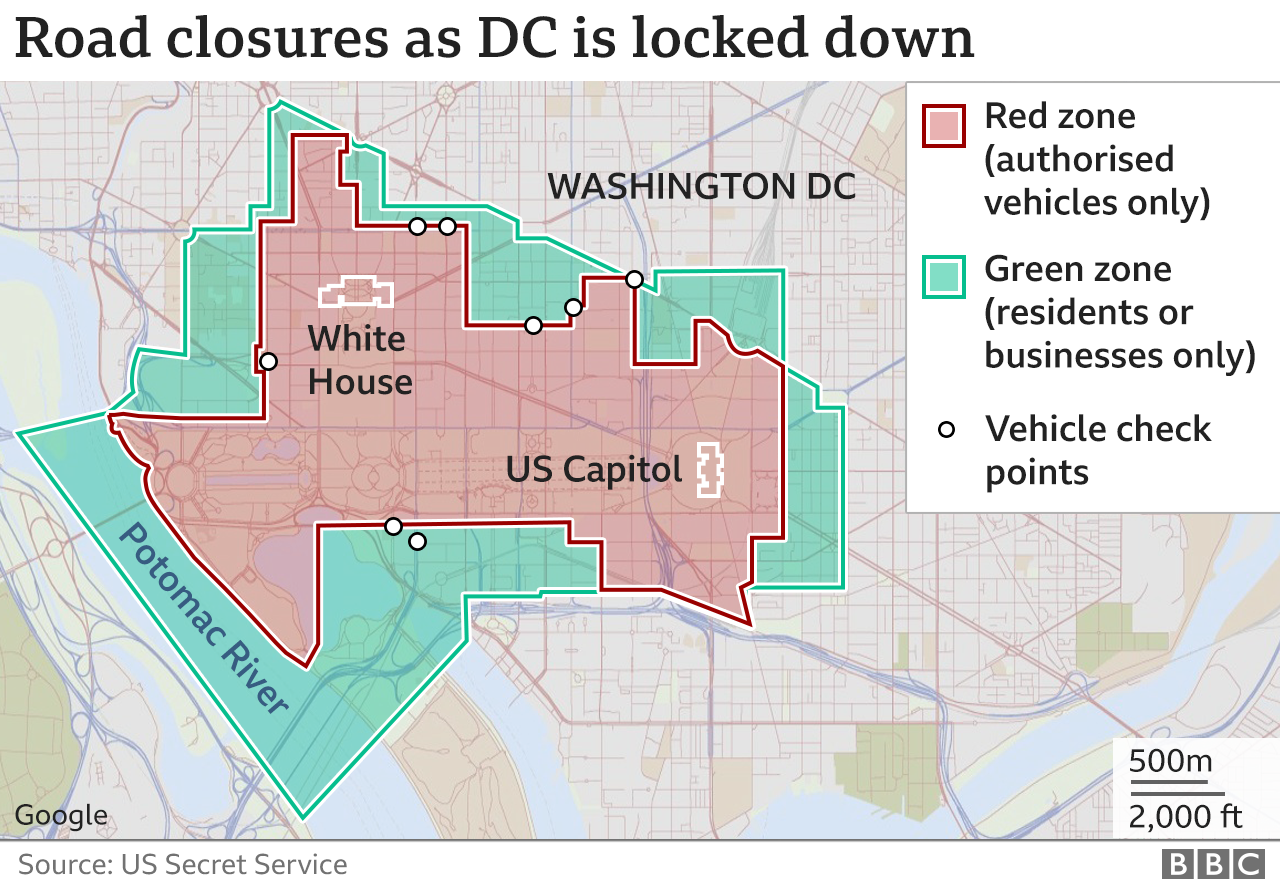

With pro-Trump protesters expected to attempt to arrive in the city from across the country, travel companies have also put some special measures in place.
Home rental firm Airbnb has cancelled bookings in DC for the period around the inauguration, as have several local hotel chains.
Airlines and airports have also stepped up security, with many of the major carriers banning passengers from being able to travel with guns checked in with their luggage, while some of those present at the Capitol riots earlier this month have been added to a no-fly list.
Amtrak, the US railway company, also said it was limiting its services in the region and passengers would see more police officers on its trains and at stations.
Mr Biden, a keen Amtrak rider, had hoped to take a train to Washington DC from his hometown of Wilmington, Delaware, on Monday but changed his plans because of security concerns.

Ceremony the same, but different
Incoming presidents are usually keen to boost the number of people at their inauguration ceremonies, but that's not the case this year.
Even before the attack on the Capitol on 6 January, Mr Biden's inaugural committee had asked supporters to stay at home because of fears that the traditional large gathering on the National Mall would turn into a coronavirus super-spreader event.
Images of the stage on the west side of the Capitol being prepared show how different the event will look, with around 100 chairs spread over the space to allow the few guests there to keep socially distanced from one another.
Those guests will be wearing face masks and will also be required to have had a negative Covid-19 test shortly before the event.


There will be no mass of supporters stretching down the National Mall for Mr Biden to look out on either, in stark contrast to the crowd of two million that gathered to see President Obama sworn in for his first term in 2009.
The National Park Service announced last week that the entire space would be closed to the public because of security concerns. Instead, a display of 200,000 flags will fill some of the space.
The Capitol building itself looks more like a fortress than the home of America's politicians at the moment, with a ring of fencing around its perimeter that Army Secretary Ryan McCarthy described as "non-scalable". Similar fencing has also been erected around the White House.


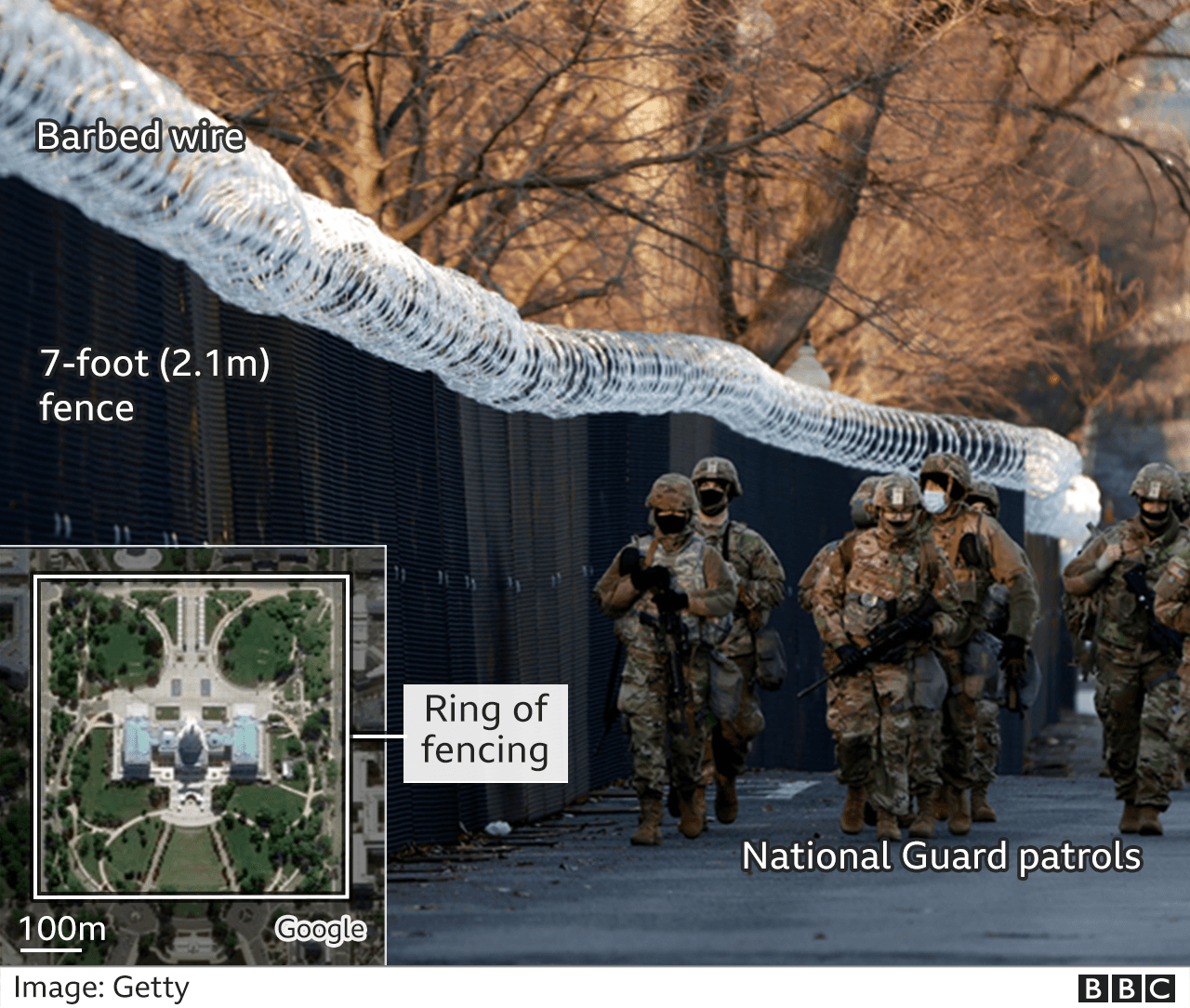

After they are sworn in, President Biden and Vice-President Kamala Harris will head to the east side of the Capitol where they will take part in the traditional "pass in review" ceremony in which the new commander in chief inspects the troops.
This would normally have kicked off the traditional parade along Pennsylvania Avenue, with a motorcade carrying the new president 1.5 miles to the White House as crowds cheer from the side of the road. That's off the cards this year because of Covid and the high risk of violence.
Mr Biden will instead travel across the Potomac River to take part in a wreath-laying ceremony at Arlington Cemetery, the country's largest military burial ground.
He is expected to be accompanied by former presidents Barack Obama, George W Bush and Bill Clinton - but not Donald Trump, who has broken with tradition to skip all of the inauguration day events.

Deep-cleaning the White House
When Mr Biden is finished in Arlington, the motorcade carrying the 46th president of the US will make its way through the roadblocks to the White House, where he will begin his term in office.
The building has seen several outbreaks of coronavirus in the last 12 months, with President Trump himself being admitted to hospital with the virus back in October.
This means everything from handrails to elevator buttons to bathroom fixtures will be wiped and sanitised before the Biden administration moves in, according to the federal agency that oversees the housekeeping effort.
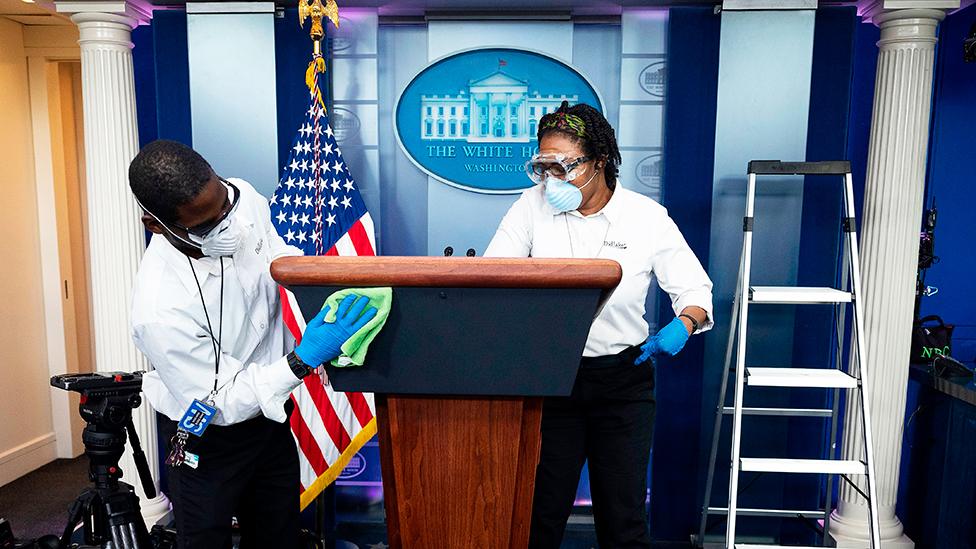
Cleaners disinfecting a lectern in the White House back in April last year
With the building being spread over six floors and containing 132 rooms, it will take a mammoth effort to disinfect everything in the time between the last member of Trump's staff leaving and the arrival of President Biden and his team.
Once Mr Biden is in, he'll have a more relaxed evening schedule than is normal for a new president. Thanks to Covid and the security concerns, the traditional balls and after-parties have been scrapped this year and replaced with a virtual concert hosted by Tom Hanks.
Related topics
- Published20 January 2021
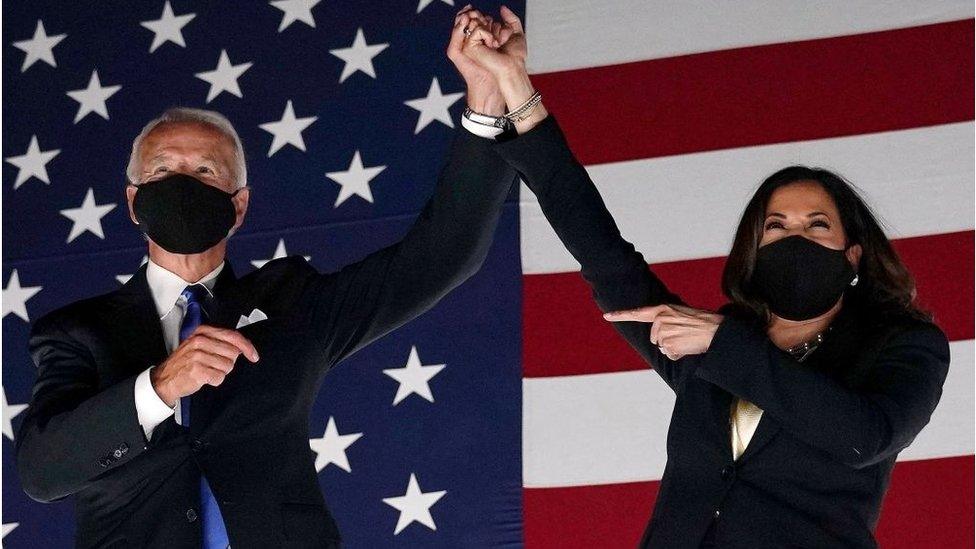
- Published21 January 2021

- Published18 January 2021
